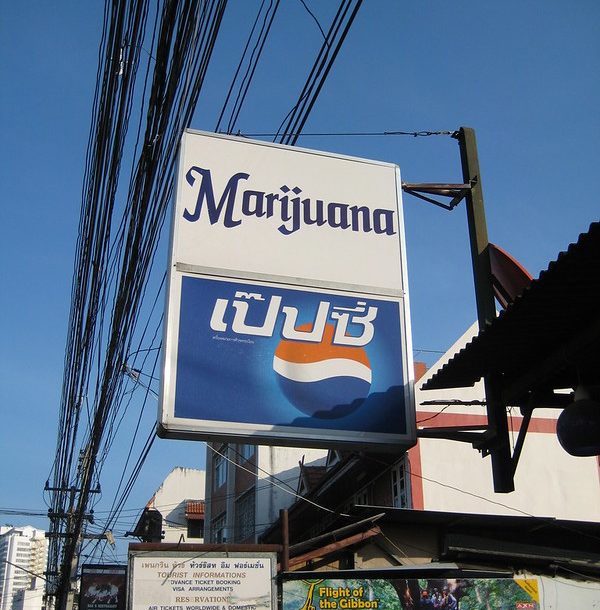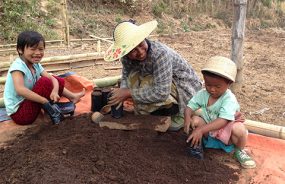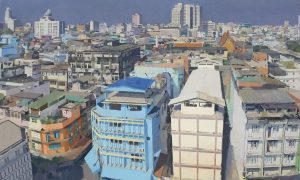This article is co-published with our partner 9DASHLINE.
In a region that stands out for having some of the most brutally punitive drug policies in the world, it was astonishing to witness Thailand become the first country in Asia to legalise cannabis. Until recently, Thailand had one of the largest prison populations in Southeast Asia, and one of the world’s highest rates of female incarceration, with most inmates convicted for drug offences. It also imposes the death penalty for certain drug offences (although there has not been an execution for a drug offence for over 10 years), has waged an anti-drug campaign that enabled the extrajudicial killing of at least 2,400 people in 2003, and arbitrarily detains thousands of people in compulsory detention centres for drug users in the name of drug rehabilitation.
Elsewhere in Southeast Asia, drug policies are no less harsh. So far this year, four men have been hanged for drug trafficking offences in Singapore. Thousands of people have been killed extrajudicially by the police in the Philippines since 2016, and even greater numbers of people are being held under arbitrary arrest and detention in prisons and in compulsory drug rehabilitation programmes. The over-investment in law enforcement and criminal justice systems to carry out the broad scope of punishment imposed by drug laws around the region has led to the inadequate capacity of social and health agencies to deliver responses to drugs that are genuinely grounded in principles of health, harm reduction, and development. These impacts are comprehensively evident in Thailand, but in 2021, several drug policy reforms came into effect, starting with the legalisation of kratom (a plant indigenous to Southeast Asia and commonly used in some rural communities in Thailand as a mild stimulant to treat fatigue), followed by the establishment of the Narcotics Code (which contained reduced penalties and revised sentencing rules to reduce levels of incarceration and shift towards providing a health response to drug use), and continuing with the legalisation of cannabis in 2022.
Uncertainties remain in Thailand’s path toward regulating cannabis
On 9 June 2022, people lined up to make their first legal purchases of cannabis. Every part of the plant has been removed from the list of controlled substances under Thailand’s drug laws. Under these laws, activities relating to cannabis — from consumption to distribution and import/export — were previously met with fines, imprisonment and even the death penalty. Now, only cannabis extracts exceeding 0.2 per cent THC (the psychoactive component of the drug) remain illegal, which seems to primarily refer to cannabis oil. Oddly enough, detailed regulations on the definition of ‘extracts’, as well as the use, sale, and cultivation of cannabis, are yet to be released (although they are expected in September 2022). This has resulted in a temporary grey zone where — aside from a few rules (e.g., to prevent public nuisance, and prohibiting sales to people under 20 years of age and pregnant women) — there are virtually no restrictions on the cannabis products that are now widely available for sale. Mobile vans stop in areas with concentrated tourist traffic and offer either pre-rolled joints or a menu of different cannabis strains to choose from to roll your own joint.
The government even started to give away one million cannabis plants to households, as people are now allowed to grow an unlimited number of plants at home for their own use. While statements from the Thai government insist that cannabis has been legalised for medical purposes, they remain vague on the extent to which non-medical use is allowed. In practice, it is now possible to buy and sell cannabis buds and flowers containing any level of THC, without a doctor’s prescription. If people are allowed to grow their own cannabis, then it also naturally follows they can use it however they choose, for medical or non-medical purposes, without a prescription required. The distinction between the medical and non-medical use of cannabis can be blurred in reality — although the 0.2 per cent THC threshold recommended by the WHO to distinguish cannabis intended for medical use is an important yardstick in the international drug control treaty framework. The fact is that long before the international drug control treaties were agreed upon (in 1961, 1971 and 1988), cannabis was part of Thailand’s traditional medical, spiritual, and culinary practices — like in many other parts of the world. After decades of prohibition (following pressure from countries such as the US), it is heartening to see Thailand reclaim its culture and traditions.
The legalisation of cannabis has been championed by Health Minister Anutin Charnvirakul, who made it his central promise during the 2019 general election campaign. Since then, he has continually referred to the twin benefits of improved access to medical treatment and economic growth as the main aim of the reforms. There are several issues of concern arising from the rushed nature of the reforms, however. For instance, the reforms were adopted without substantive public consultations, where the voices of people who use cannabis or farmers seeking to enter the new cannabis market could have been heard. In addition, people who use cannabis for medical purposes have found the government-supplied products ineffective and have returned to the black market to fulfil their treatment needs. Small-scale farmers have found the bureaucratic hurdles and costs of commercial production too high and doubt that they can compete with larger corporations. As a result, a group of advocates have put forward a people’s draft law to push for a decentralised regime that would enable the market participation of a wide range of local farmers and other actors in the supply chain. Given the newfound availability of legal cannabis, there is also a pressing need for education and advice to promote the safe and responsible use and cultivation of cannabis.
The significant impact of changes to the drug laws
It is important to note that at each step of Thailand’s drug law reforms since 2021, people deemed eligible were released from prison. Over 10,000 people convicted of kratom-related offences and over 3,000 people convicted of cannabis-related offences were released from prison and had their convictions expunged. Many more who were convicted of other offences that were ineligible for release also had their convictions relating to kratom and cannabis expunged. People in prison were encouraged to apply for reconsideration of their sentences after the Narcotics Code took effect, which could result in a sentence reduction and make them eligible for immediate release. Unlike the cannabis reforms, the legalisation of kratom and the adoption of the Narcotics Code took place after a lengthy consideration process, which was led chiefly by the Ministry of Justice.
The pathway to reform was significantly different to that of cannabis — not to mention, overshadowed by the cannabis reforms. However, in a region still marked by extremely cruel and inhumane responses to people engaged in drug-related activities, the reforms to Thailand’s criminal justice, health and economic systems resulting from the series of drug law changes represent a welcome change. Hopefully, the changes will become a model to look to for Thailand’s neighbours. But for now, uncertainties and concerns about the future shape of these reforms remain.
 Facebook
Facebook  Twitter
Twitter  Soundcloud
Soundcloud  Youtube
Youtube  Rss
Rss 



